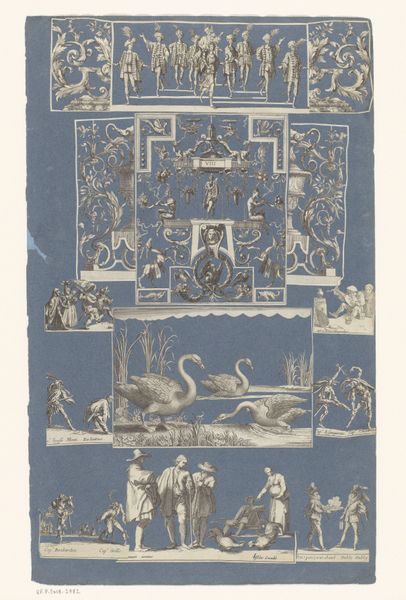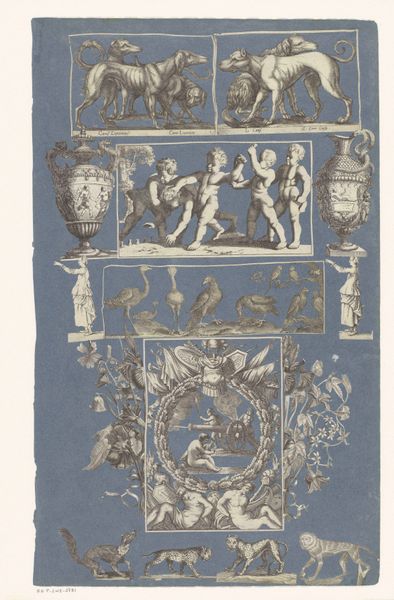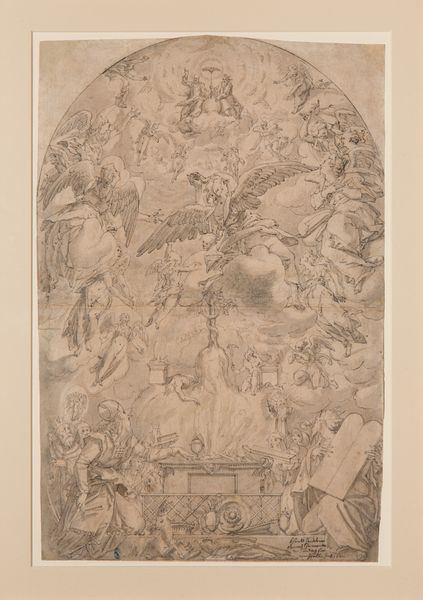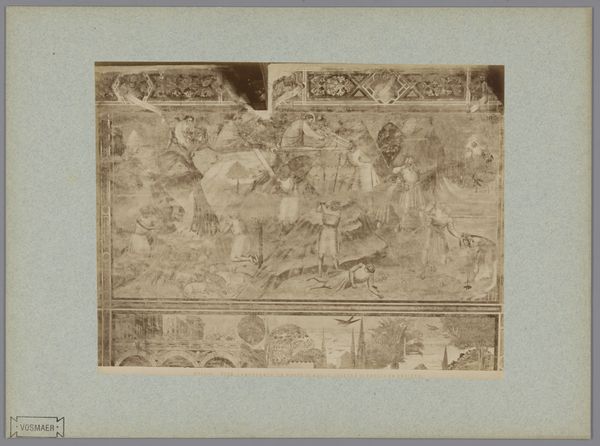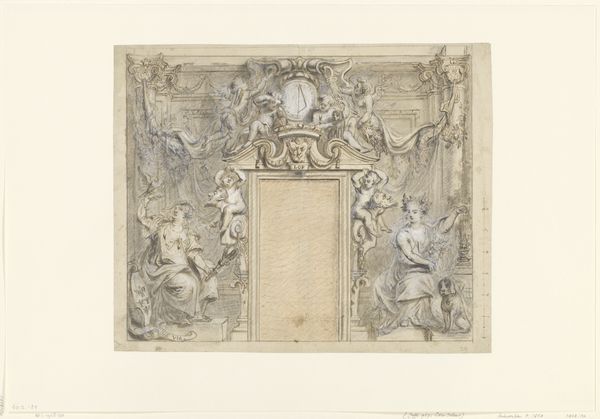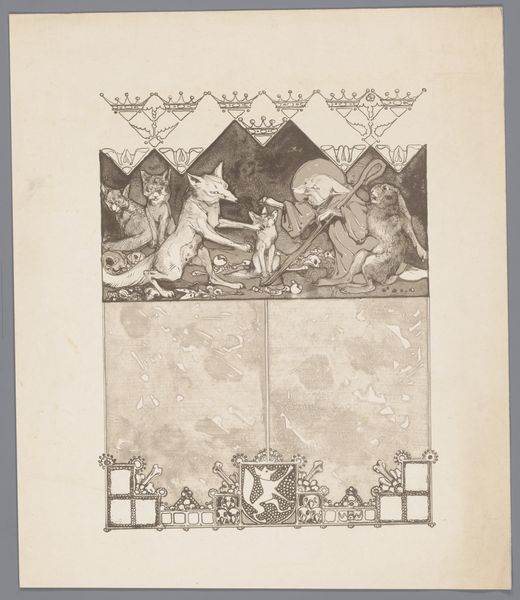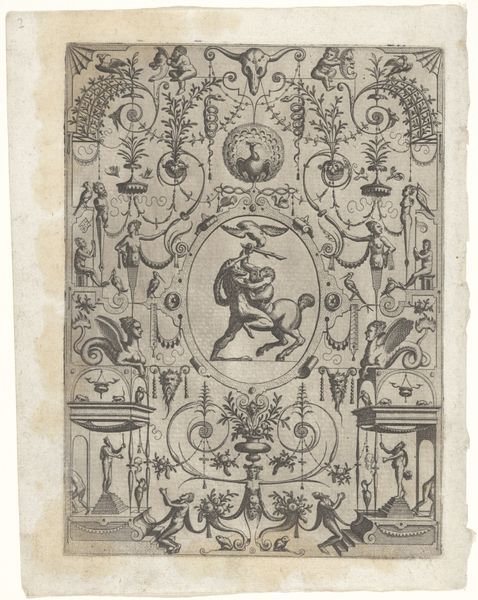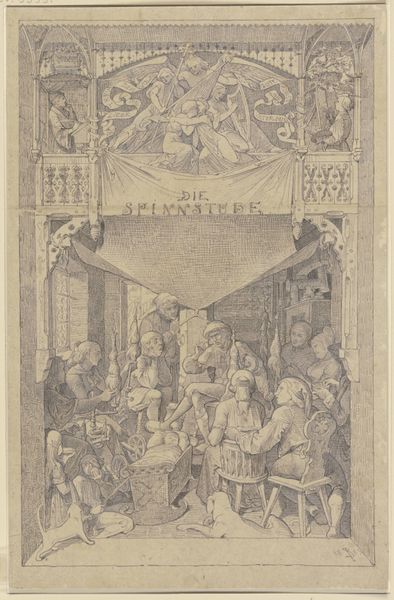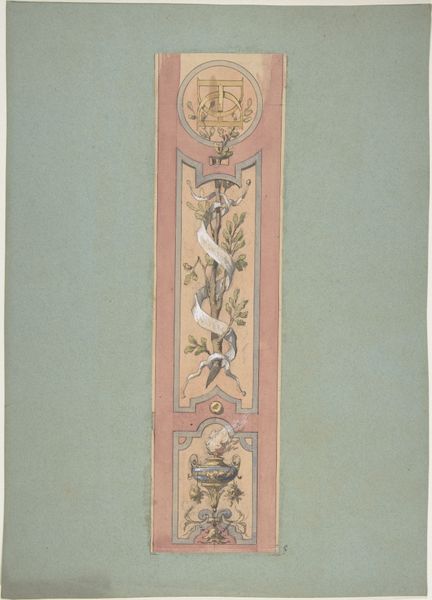
Collage van uitgeknipte prenten geplakt op een albumblad van blauw papier c. 1680 - 1720
0:00
0:00
mixed-media, collage, print, paper
#
mixed-media
#
collage
#
narrative-art
# print
#
paper
#
folk-art
#
genre-painting
#
miniature
Dimensions: height 535 mm, width 400 mm
Copyright: Rijks Museum: Open Domain
Curator: This whimsical collage, dating from around 1680 to 1720, is a riot of imagery, isn't it? It’s titled “Collage van uitgeknipte prenten geplakt op een albumblad van blauw papier,” which translates to “Collage of cut-out prints pasted on an album leaf of blue paper." It's part of the Rijksmuseum collection, by diverse makers. Editor: My immediate impression is how much this predates any notion of modern collage. It’s playful, but in a strangely contained way. The muted blues and grays give it a somber quality despite the bizarre collection of figures. What exactly are we looking at here? Curator: Precisely. In its time, this would have been an interesting intersection between artistic practices, like printmaking, with emerging notions of leisure. Its combination of classical, biblical, and genre scenes reflect its socio-political context. Editor: Tell me more. Is it unusual to see mixed scenes treated this way? Curator: The seemingly random assortment speaks volumes about the access people had to printed materials and the ways in which they were repurposed in domestic settings. Note the mythical figures at the top juxtaposed with what appear to be genre paintings towards the bottom. Editor: I do see a procession of figures above a framed pastoral scene. The use of paper as medium, however, tempers any sense of elitism that might otherwise be associated with art collecting, right? Curator: Definitely. While access to art and imagery was broadening in this period, collage offered a unique opportunity for personal curation and interpretation, democratizing imagery, so to speak. I consider this a commentary on how class and social structures impact art production, reception, and display. The collage presents itself as a fascinating space for individual and cultural expression. Editor: That said, the content of many of these small pictures appear fairly… conventional. Is there anything about this format, do you think, that enabled a challenging of norms? Are they making any clear point, beyond simply assembling diverse scenes on a page? Curator: That's an interesting question. Perhaps the subversiveness is not in overt iconoclasm, but in the re-contextualization, deconstructing of existing hierarchies and social customs by bringing these images together and enabling individual re-organization of cultural materials, suggesting emerging modern notions of selfhood, and of creating new and alternative visual narratives. Editor: Well, this has certainly altered my first, somewhat dismissive, impression of it. What seems like a strange gathering of images actually speaks volumes about societal access to imagery, individual expression, and early attempts at a more democratic visual culture. Curator: I'm glad. Seeing it as just a proto-collage almost minimizes its rich social and historical dimensions. It's a testament to how everyday materials and creative interventions can challenge existing cultural frameworks.
Comments
No comments
Be the first to comment and join the conversation on the ultimate creative platform.
